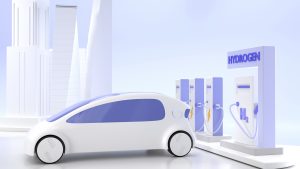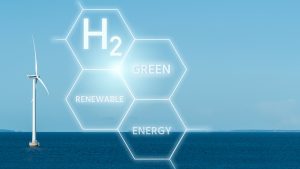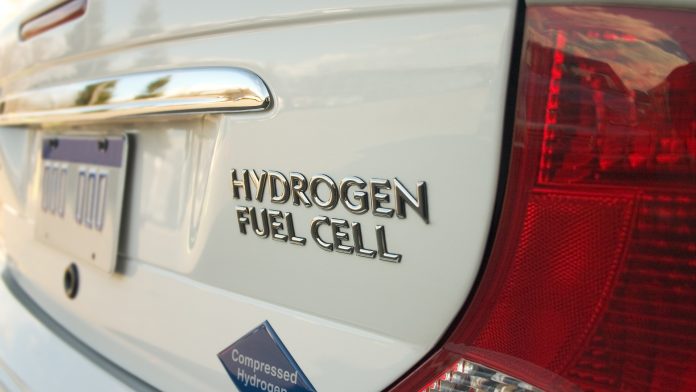Simone Bruckner, Managing Director of automotive resistor manufacturer Cressall Resistors, investigates how we can unleash the potential of hydrogen power.
As the most abundant element in the Universe, hydrogen is the input for nuclear fusion that powers our Sun. It is a key element in the fossil fuels that have powered society since the first industrial revolution. Furthermore, hydrogen as an energy carrier has major advantages over fossil fuels for mobility applications, particularly in the development of fuel cell electric vehicles (FCEVs).
With bans on the production of new diesel and petrol-powered vehicles looming, encouraging widespread consumer uptake of more sustainable vehicle choices is an urgent matter. Uptake seems to be increasing – according to the Society of Motor Manufacturers and Traders (SMMT), demand for battery electric vehicles (BEVs) more than doubled between November 2020 and November 2021. But if transport is to decarbonise before its 2050 deadline, there is more to do to make EVs carbon neutral.
BEVs’ sustainability shortfalls
Fully decarbonising BEVs is tricky. Using energy from the National Grid means that the sources used for electricity generation directly affect BEVs’ environmental impact. The grid is becoming more renewable and is set to be net zero by 2050. But there is an added challenge. According to the Committee on Climate Change, electricity demand is set to double from today’s 300-terawatt-hour (TWh) requirement to 610 TWh by 2050, thanks to BEV uptake.
So, to complete the dual task of increasing supply and decarbonising electricity generation, the government is investing in dispatchable low carbon sources to support variable weather-dependent renewables in powering the grid when production falls short of demand. In the meantime, fossil-fuelled electricity generation is negatively impacting BEVs’ sustainability.
BEVs also have some additional environmental concerns regarding their reliance on lithium-ion batteries. Critical metals including cobalt, nickel, and manganese are all major components of lithium-ion batteries. Mining these materials can result in huge environmental destruction, disrupting entire ecosystems, while the heavy machinery used contributes even more emissions. So, is there a more sustainable option?
Hydrogen power: The fuel of the future
Hydrogen is a promising resource that is key to delivering transport’s decarbonised future. Industrial production of hydrogen is typically delivered through electrolysis — using an electrical current to split water into hydrogen and oxygen.
Across the globe, the hydrogen market is developing in leaps and bounds. Currently, Europe has one of the world’s most developed hydrogen markets and is home to over half of all projects, according to the Hydrogen Council and McKinsey’s Hydrogen Insights Reports 2021. Both the UK and the EU have plans to develop their hydrogen power offering and have committed to reaching a production capacity of five gigawatts (GW) and 40 GW respectively by 2030.

Elsewhere, countries in the Asia Pacific region are also betting big on hydrogen. Japan was the first country to adopt a focused approach to the development of its hydrogen economy when its government released its ‘Basic Hydrogen Strategy’ in 2017, and continues to lead the way in the sector. The Tokyo Olympic Games’ iconic Olympic cauldron made history as the first to be lit by hydrogen, while Japan is extending its hydrogen ambition with plans to construct 1,000 hydrogen refuelling stations for fuel cell vehicles across the country by 2030.
Despite the growing maturity of the sector, hydrogen technologies still need considerable development in order to reach net zero targets and to become a viable fuel source for automotive applications. Making usable, renewable hydrogen is no easy feat — so where is the best starting point?
Clean is green
First, we must consider how we make hydrogen green. Hydrogen can be produced in many ways, each corresponding to a different colour. Most hydrogen currently produced is grey — meaning it is produced by mixing natural gas and steam to create hydrogen and carbon dioxide in a process known as steam methane reformation. As it stands, as much as 95% of the hydrogen produced is grey.
Another common variation of hydrogen is brown. This form is more environmentally damaging than grey hydrogen, although it is less common, as both the carbon dioxide and carbon monoxide generated during the brown hydrogen process are not recaptured. Hydrogen is labelled blue whenever the carbon generated from steam reforming is captured and stored underground through industrial carbon capture and storage (CSS).
As a result, blue hydrogen is sometimes referred to as carbon neutral as the emissions are not dispersed in the atmosphere. However, some argue that ‘low carbon’ would be a more accurate description, as up to 20% of the generated carbon cannot be captured.
The problem with these methods of producing hydrogen is that they all rely on fossil fuels, which conflicts with hydrogen’s alleged sustainability superiority over petrol and diesel-powered vehicles. Ideally, we need to make green hydrogen, which uses renewable electricity to separate the hydrogen and oxygen atoms that make up water in a process called electrolysis. This results in zero carbon emissions.
Geographically, Europe is in an advantageous position to produce green hydrogen due to an abundance of renewable energy sources in the surrounding area. The EU’s Hydrogen Strategy Report has already identified North Africa as a priority region for increasing hydrogen availability across Europe, thanks to a plentiful supply of sunlight and subsequent renewable energy.
Elsewhere, efforts to scale up renewable power also put the production of green hydrogen in a favourable position, with the U.S. Energy Information Administration estimating a 10% increase in renewable power generation in 2022. The UK government has also set a target to produce five GW of green hydrogen by 2030 and has already announced investments into projects like Whitelee Windfarm near Glasgow, which will use wind power to generate electricity for hydrogen production.

Improving fuel efficiency
In addition to making hydrogen greener with the aid of renewables, making hydrogen-powered vehicles commercially viable is also top of the agenda for automakers. According to Hydrogen Mobility Europe, if hydrogen remains at its current low levels of demand, the cost of producing and supplying hydrogen could be passed on to end users. This would mean that hydrogen-powered vehicles would cost more to run than both BEVs and fossil-fuelled cars. Therefore, any technology that can drive down cost is crucial to increasing uptake.
FCEVs are powered by proton exchange membrane fuel cells. FCEVs turn hydrogen into electricity by combining the hydrogen fuel with air and pumping it into the fuel cell. Once inside the fuel cell, this triggers a chemical reaction, resulting in the extraction of electrons from the hydrogen. These electrons then create electricity, which is stored in a small battery used to power the vehicle.
Although the benefits of green hydrogen FCEVs are clear, the technology behind them still needs refining. Fuel cells are unable to work under heavy loads for a long time, which presents issues when rapidly accelerating or decelerating.
Studies into fuel cell function have shown that, when a FCEV begins accelerating, the fuel cell’s power output increases gradually to a point, but then it begins to oscillate and drop despite velocity remaining consistent. This unreliable power output presents a challenge for automakers.
The solution is to install a fuel cell for a higher power requirement than necessary. For example, if a FCEV needs 100 kilowatts (kW) of power, installing a 120-kW fuel cell would ensure there is always 100 kW of power available, even if the fuel cell’s power output drops. Opting for this solution requires a resistor to remove the excess energy when not required, to perform a ‘load bank’ function.
FCEVs fuelled with green hydrogen are completely carbon-free, thanks to the renewable origins of these fuel cells. The only end products of the fuel cell reaction are electricity, water and heat, and the sole exhaust emissions are water vapour and air. As long as we make them commercially viable, FCEVs seem to be a more aligned choice with net zero goals, enabling a widespread, carbon-neutral EV rollout.

Simone Bruckner
Managing Director
Cressall Resistors
www.cressall.com
https://www.linkedin.com/in/simone-bruckner-3b75051/?originalSubdomain=uk
Please note, this article will also appear in the eleventh edition of our quarterly publication







